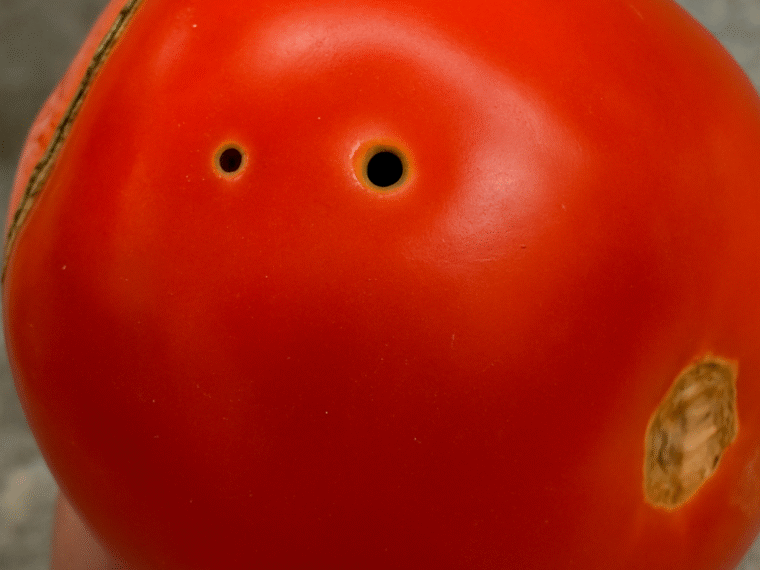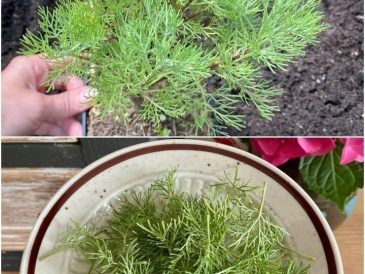Tomatoes are one of the most commonly consumed vegetables (technically a fruit) around the world. From fresh salads to sauces, they’re a kitchen staple. But did you know that not all tomatoes are safe to eat—especially those that show very specific signs of damage?
If you ever notice a tomato with small, perfectly round holes or one that looks like it’s been chewed on, it’s a red flag. The image above clearly illustrates this: a tomato with puncture holes, another with internal decay, and even a snake attacking a large tomato (a rare but eye-catching warning). These signs should not be ignored.
What Causes These Holes in Tomatoes?
The small holes and damaged areas are often caused by pests or parasites, such as:
- Tomato Fruitworms (Helicoverpa zea): These caterpillars bore into tomatoes, leaving round holes. Once inside, they destroy the fruit from within.
- Cutworms and Armyworms: They chew through the skin and feed on the inner flesh.
- Snakes and Rodents: While rare, some wildlife like snakes might be attracted to the moisture in ripe fruits, especially during droughts or dry seasons.
- Fruit Flies or Beetles: Tiny insects can lay eggs inside tomatoes. When the larvae hatch, they feed inside, causing internal rot and contamination.
Why You Should Not Eat Such Tomatoes
Eating tomatoes that have been punctured or compromised can be risky for your health for several reasons:
- Bacterial or Fungal Contamination: Once the skin is broken, the fruit becomes a breeding ground for bacteria and mold.
- Insect Larvae Inside: Even if the hole is small, the inside could be infested with larvae or insects, which are not visible from the outside.
- Rotten or Fermented Interior: Damaged tomatoes often spoil faster and may even start to ferment, developing a sour or alcoholic taste.
- Potential Toxins: Some insects leave behind waste or toxins that can upset your stomach or lead to foodborne illnesses.
Can You Just Cut Around the Holes?
Many people are tempted to just cut around the holes and eat the rest of the tomato. However, this is not recommended, especially if:
- The tomato is soft or leaking.
- There’s visible mold or discoloration inside.
- You’re unsure how long it’s been damaged.
When in doubt, throw it out.
How to Prevent This Problem
To keep your garden or produce pest-free:
- Inspect your tomatoes regularly for early signs of damage.
- Use organic pest control methods such as neem oil or diatomaceous earth.
- Install fine mesh netting over plants to prevent insects from laying eggs.
- Harvest ripe tomatoes promptly to avoid attracting pests.
- Store tomatoes in a clean, dry area away from open windows or entry points for bugs.
Final Tip
Your health is more important than saving a tomato. If you come across a tomato with mysterious small holes or unusual signs of external damage, it’s best to avoid consuming it entirely. These could be signs of pest infestation, internal rot, or even contamination that isn’t visible from the outside.
Be cautious, stay safe, and always inspect your produce before eating.





